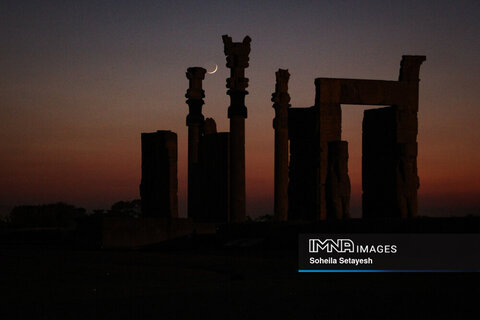Iran (IMNA)_Persepolis is the Greek name for the city of Parsa. It is situated on the Marvdasht plain, on the high Iranian plateau, with its back sheltered from the north winds by the great Kuh-e Rahmat (“Mountain of Mercy”).
Persepolis is rarely mentioned by any name in foreign records, which instead places more emphasis on other Achaemenid capitals like Babylon, Ecbatana (modern Hamadan), and Shush, which is somewhat surprising for a city of its size and grandeur. The existence of the city may have been kept a secret from the outside world as a result, according to some archaeologists.
With canals providing irrigation, the plain is lush and fertile and is covered in fields. The best time to visit is in the spring because it is beautiful and not too hot in the summer or too cold in the winter.
In comparison to the Persian Empire, which stretched from Libya and the Black Sea to India and Central Asia, Greece is incredibly small.
Getting there
By car, Persepolis is easily reachable. The routes are secure, and there are rest stops every so often. Several close ports on the Persian Gulf are available if you're arriving by boat.
There is evidence of Persian kings' efforts to modernize their nation dating back to prehistoric times, and a royal road connecting Sardis and southwest Turkey even exists today.
According to the British Museum, King Darius I has also just announced a new ‘big dig’ in Egypt to build a new Suez Canal, so it will only take four days to get from the Nile to the Red Sea, and we expect a new shipping route to Egypt to be announced soon.
Things to see and do
The amazingness of the ornamental gardens inspired the creation of the word "paradise" specifically for them. These are formal gardens that use poplar trees for shade and are laid out in a "four square" geometric pattern with tiny stone water channels for the various flower beds. In case there is an admission policy, it is best to ask a local.
Rising above the city is the citadel, if you can get access, it is spectacular, as is the view from the top.
It is approached by large staircases with shallow steps suitable for anyone in long robes or with limited mobility and entered through a gatehouse. There are lots of courtyards inside, with columned halls raised on platforms, and carved reliefs.
If you are lucky enough to be invited to the court, prepare to be overwhelmed by its splendor. The court is huge – one king had 329 concubines who played musical instruments, 46 men to weave garlands, 277 cooks to make fancy titbits, 29 caterers and 14 perfumers.
Shopping
If you want to bring some lovely trinkets home, make sure to stop by the bazaar. The Persian origin of the word "bazaar" lends it the right connotation of exotic riches, heady scents, and a profusion of oddities. You can buy anything under the sun in Parsa.
Entertainment
Iranians love to celebrate spring because it marks the beginning of better weather and a lusher landscape. People exchange gifts and put on new clothing during this season.
Some say that is why the reliefs show people in local dress bringing distinctive products to the king, but it is more likely that they show how keen everyone is to be part of his empire, as they remember what happened when people rebelled at the beginning of the reign of Darius I and it was not very pleasant at all as he cut off the nose and ears of the ringleaders blinded them in one eye and then impaled them.
Where to stay
The majority of the city is made up of single-story homes constructed of sun-dried bricks, and the city is located in an attractive area of the plain. The best option is to try to stay with someone, as Persian hospitality is excellent.
The city is overshadowed by the citadel where royalty live when they’re not traveling or staying in their other royal seats in Ecbatana, Susa, and Babylon. The citadel is heavily fortified, and new palaces are constantly being built or modified.
Food and drink
Iranian cuisine is well-known for its sweet and sour flavors, juicy fruits, nuts, and intricate recipes. Cumin and cardamom are commonly used. Garlic, onions, pomegranates, and pistachios are popular too. They make a strong sauce from capers in brine, which is quite a like soy sauce. Flatbread is the most popular bread from bakeries. Salt is imported from mines almost as far as Zanjan in northwest Iran, and there’s a novelty Indian food called rice, which is used in sweet puddings.
AFM


Your Comment